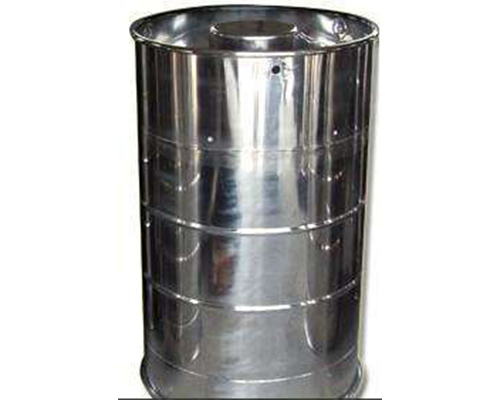Yingkou Hengyang New Energy Chemical Co., Ltd.
Address: Xianren Island Energy and Chemical Zone, Yingkou City, Liaoning Province, via the west side of the Fourth Road
Zip code:115200
Telephone:18241754999
Fax:0417-6775999
E-mail:1313264@qq.com
Website:en.yingkouhengyang.com
The process of catalytic synthesis of diethyl carbonate by low pressure vapor phase method has the following advantages: (1) mild reaction conditions, low temperature and normal pressure; (2) the reaction is carried out under the condition of self-closing circulation without three wastes, which is environmentally friendly, and the total conversion of C0 is close to 100%; (3) Compared with liquid phase method, low pressure gas has the following advantages. Fixed-bed reactor in phase method does not need to separate products and catalysts, which greatly saves equipment investment; (4) Diethyl carbonate is synthesized with ethyl nitrite, and the reaction is carried out under anhydrous conditions, so the catalyst life increases; (5) The oxygen added to the synthesis reaction is reacted in the ethyl nitrite regenerator. Oxygen is not added in the reactor, so the byproducts such as C02 are very few. At the same time, the non-oxygen atmosphere makes the explosion less dangerous and the operation safe and stable. Therefore, it is one of the advanced production methods for synthesis of diethyl carbonate. In 1981, the method of synthesizing dialkyl carbonate from carbon monoxide and nitrite loaded on aluminium trioxide, silica, zeolite or activated carbon at 50-200 C under the action of platinum metal salts was developed by Yumo, Japan. Subsequently, they further optimized the catalyst system and support, and developed a composite catalyst consisting of platinum-based metal compounds and iron, copper, bismuth, cobalt, nickel or tin compounds; platinum-based metal compounds and iron, copper, bismuth, cobalt, nickel or tin compounds, followed by vanadium, molybdenum compounds or sulphuric acid and phosphoric acid groups. A ternary catalyst is formed; a composite catalyst consisting of a platinum metal compound and at least one rare earth metal compound, etc.
10 Heinz et al. used carbon monoxide to react with ethyl nitrite in continuous gas phase in the presence of multiphase platinum metal catalyst. The activity of the catalyst was maintained by adding a small amount of halogen. The reaction pressure is 0.1-0.5 MPa and the temperature is 70-150 C. PdCl2 was chosen as catalyst. The concentration of hydrogen chloride in the gas ranged from 1 *10-5 (mo1)%-500 *10-5 (mol)%. Diethyl carbonate was almost selectively generated quantitatively without catalyst deactivation. Alumina, spinel, silicate, montmorillonite, zeolite, activated carbon, molecular sieve, diatomite, silica and so on can be used as carriers. The volume ratio of ethyl nitrite to 20 is between 0.3 and 3, and the selectivity of the reaction is over 99%. Jiang et al. cooperated with the Institute of Chemistry, Academia Sinica of Taiwan. Pd was used as active component and loaded on MCM-41 zeolite. If a single metal active component is used, the high yield of diethyl carbonate is usually not obtained. Therefore, two or more metal active components are loaded on T1-MCM and Si-MCM zeolites, and the halides of copper are most commonly used. By comparing different types of MCM-41 molecular sieves (T1-MCM-41 and Si-MCM-41), the results showed that the catalyst supported on SiM exhibited higher activity than that supported on TiM at normal pressure, and the two catalysts showed different effects: copper supported on SiM was beneficial to the formation of DEO, while copper supported on SiM was negative. Ti loading is beneficial to the formation of DEC, while on TiM carrier, it is just the opposite. Su Yuehua et al. synthesized DEC by vapor phase synthesis using activated carbon as carrier. The performance of supported PL catalyst was investigated under normal pressure and 80-120 C. It was found that the highest yield of DEC was 85.1 (wt)%. Drop-by-drop impregnation method could greatly improve the selectivity of DEC to 92.3%. Within 105-112 C. Compared with the direct oxidative carbonylation method, the low-pressure synthesis method can obtain a higher space-time yield. The conversion of reactants in the synthesis stage is very high. Its atomic economy is the same as that of direct method, by-products are harmless water, and the reaction system does not contain oxygen, which is beneficial to safe production. But the reaction is composed of two steps: synthesis reaction and regeneration reaction. How to optimize the cycle matching and achieve harmless production is the key problem in engineering enlargement.
